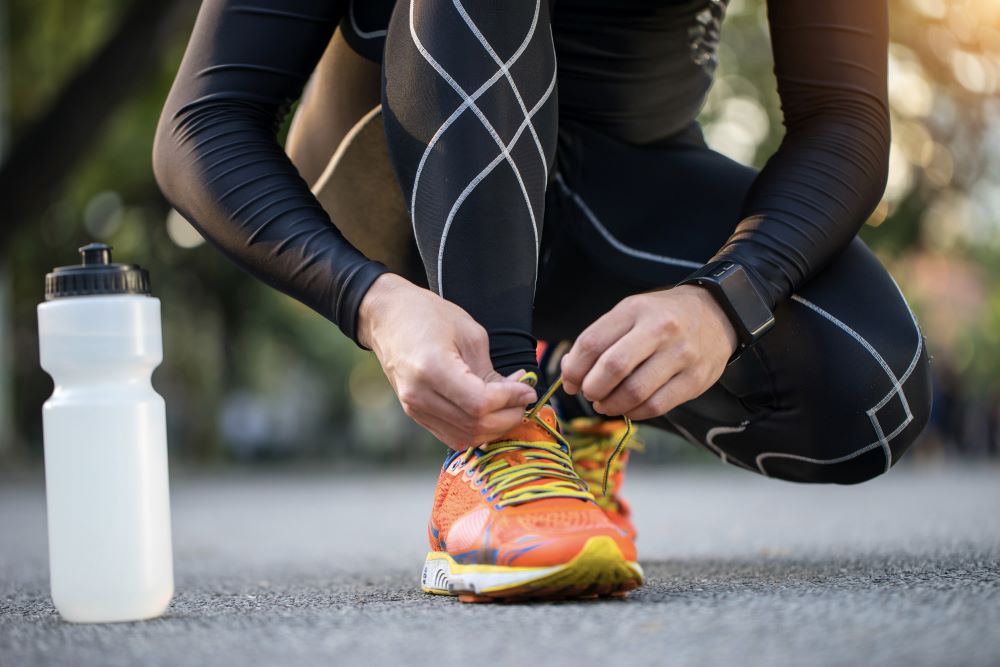In today’s fast-paced world, finding the time and resources to maintain a fitness routine can be challenging. That’s where running exercises without equipment come into play. These workouts are designed to be accessible, effective, and adaptable for all fitness levels. Whether you are a beginner looking to start your fitness journey or an experienced runner aiming to enhance your training, you can achieve your goals without the need for fancy gym equipment.
Running exercises can be performed virtually anywhere, from your local park to your backyard, allowing you to enjoy the fresh air and nature while you work out. Some of the most beneficial aspects of these exercises include:
- Improved cardiovascular health: Regular running strengthens your heart and lungs, enhancing overall endurance.
- Increased calorie burn: Bodyweight running exercises can help you burn calories effectively, aiding in weight management.
- Enhanced muscle strength: Many running drills engage various muscle groups, providing a full-body workout.
Not only do these exercises promote physical health, but they also contribute to mental well-being, relieving stress and boosting your mood. Are you ready to embrace the joy of running? Visit our website to learn more and get started today! Click here.
Benefits of Running Exercises Without Any Equipment
Engaging in running exercises without any equipment offers numerous benefits that can significantly enhance your physical and mental health. Here are some key advantages:
- Cost-Effective: One of the most appealing aspects of bodyweight running exercises is that they require no financial investment. You can achieve your fitness goals without spending money on gym memberships or expensive equipment.
- Flexibility and Convenience: Without the need for equipment, you can run virtually anywhere and at any time. This flexibility makes it easier to fit workouts into your busy schedule, whether you’re at home, traveling, or enjoying a day outdoors.
- Improved Agility and Coordination: Many bodyweight running drills focus on agility, speed, and coordination, helping you develop better overall movement patterns.
- Enhanced Mental Resilience: Running can be a meditative experience, allowing you to clear your mind, reduce anxiety, and boost your mood. The simplicity of running can also foster a sense of accomplishment, motivating you to push your limits.
- Versatile Workouts: Running exercises can be easily modified to suit your fitness level. Whether you prefer sprint intervals, hill runs, or distance running, you can tailor your routine to meet your specific needs.
Incorporating running exercises into your routine can lead to significant improvements in your overall health and well-being. With no barriers to entry, you can start your fitness journey right now!
Essential Warm-Up Techniques for Running Workouts

Before diving into your running exercises without equipment, it’s crucial to prepare your body through effective warm-up techniques. A proper warm-up helps prevent injuries, enhances performance, and prepares your muscles for the workout ahead. Here are some essential warm-up techniques to incorporate into your routine:
- Dynamic Stretching: Engage in dynamic stretches such as leg swings, arm circles, and walking lunges. These movements increase blood flow to your muscles and improve flexibility.
- High-Knees: This exercise not only warms up your legs but also elevates your heart rate. Stand in place and drive your knees up toward your chest repeatedly for about 30 seconds.
- Butt Kicks: Butt kicks are great for warming up your hamstrings. While jogging in place, kick your heels up towards your glutes, alternating legs for 30 seconds.
- Side Lunges: Perform side lunges to activate your inner thighs and improve lateral movement. Step out to the side and lower your body, keeping your opposite leg straight. Alternate sides for 10-15 reps.
- Skipping: Incorporate skipping into your warm-up routine to enhance coordination and get your heart rate up. Skip forward for 20-30 meters, focusing on an upright posture and a light bounce.
By incorporating these warm-up techniques into your running routine, you’ll prepare your body effectively, reducing the risk of injury and maximizing your workout performance. Remember, a few minutes of warm-up can make a significant difference!
Top Running Exercises for Beginners Without Equipment

Starting your running journey can be exciting yet challenging, especially for beginners. The good news is that there are plenty of effective running exercises without equipment that can help you build stamina, improve your technique, and enhance your overall fitness. Here are some top exercises tailored for beginners:
- Walk-Run Intervals: Begin with a combination of walking and running intervals. Start with a 5-minute brisk walk to warm up, then alternate between 1 minute of running and 2 minutes of walking, repeating this cycle for 20-30 minutes.
- Basic Jogging: Once comfortable with intervals, transition to a steady jog. Aim for a pace that allows you to hold a conversation. Gradually increase your jogging duration as your fitness improves.
- Hill Sprints: Find a gentle incline and practice short bursts of running uphill. Sprint for 10-20 seconds, then walk back down to recover. This is excellent for building strength and speed.
- Fartlek Training: This Swedish term means “speed play.” Incorporate bursts of speed into your regular runs. For instance, after every 5 minutes of jogging, sprint for 30 seconds, then return to your regular pace.
- Walking Lunges: While not a traditional running exercise, walking lunges help strengthen your legs and improve balance. Take a step forward and lower your back knee towards the ground, alternating legs for 10-15 reps.
These exercises are designed to help beginners gradually build their running capability while ensuring that they remain engaged and motivated. Remember, consistency is key, so listen to your body and give yourself time to adapt!
Intermediate Running Exercises to Challenge Your Fitness

Once you’ve mastered the basics and are ready to take your running to the next level, incorporating intermediate running exercises without equipment can dramatically enhance your fitness. These workouts will not only challenge you but also improve your speed, endurance, and overall performance. Here are some effective exercises to consider:
- Tempo Runs: This involves running at a pace that is comfortably hard—about 75-85% of your maximum effort. Start with a 10-minute warm-up, then run at your tempo pace for 20 minutes, followed by a 10-minute cool down. This helps build your lactate threshold.
- Long Runs: Set aside one day a week for a longer run, gradually increasing the distance. Aim for a pace that is slower than your typical run, allowing your body to adapt to longer durations.
- Interval Training: Short, high-intensity intervals can significantly boost your speed. After a warm-up, alternate between 400 meters of fast running and 400 meters of walking or slow jogging. Repeat this cycle for 20-30 minutes.
- Progression Runs: Start at an easy pace and gradually increase your speed throughout the run. For a 30-minute run, you might spend the first 10 minutes easy, the next 10 minutes at a steady pace, and the final 10 minutes at a faster pace.
- Strides: Incorporate strides into your regular runs. After your workout, perform 4-6 strides of 20-30 seconds, gradually accelerating to near-sprint speed, then walking to recover.
These intermediate exercises are designed to push your limits, helping you become a more efficient and faster runner. Always remember to focus on proper form and breathing techniques to maximize your performance and minimize the risk of injury.
Advanced Running Exercises for Seasoned Runners

For seasoned runners looking to take their training to unprecedented heights, advanced running exercises without equipment offer the perfect opportunity to challenge both your body and mind. These workouts are designed to enhance your speed, strength, and endurance, providing a comprehensive approach to running fitness. Here are some advanced exercises to incorporate into your routine:
- Hill Repeats: Find a steep hill and sprint up at maximum effort, then jog or walk back down for recovery. Repeat this 6-10 times. Hill repeats build strength and power in your legs, making you a more efficient runner.
- Fartlek Training: This Swedish term means “speed play.” During a regular run, incorporate bursts of fast-paced running followed by slower recovery periods. For example, sprint to a landmark in the distance, then recover until you reach another point.
- Progressive Intervals: Instead of steady intervals, increase your pace with each round. Start with 800 meters at a moderate pace, then gradually increase your speed for subsequent intervals, challenging your ability to maintain form under fatigue.
- Negative Splits: Aim to run the second half of a race or workout faster than the first. This strategy teaches pacing and helps improve endurance and stamina.
- Speed Work: Incorporate shorter, high-speed sprints into your training. Use a track or flat surface to perform 200-400 meter sprints, focusing on maximizing your speed and maintaining proper form.
These advanced exercises will not only elevate your running game but also keep you engaged and motivated. Whether you’re preparing for a marathon or seeking personal bests, implementing these workouts can help you reach your goals. Visit our website to learn more and get started today! Click here.


